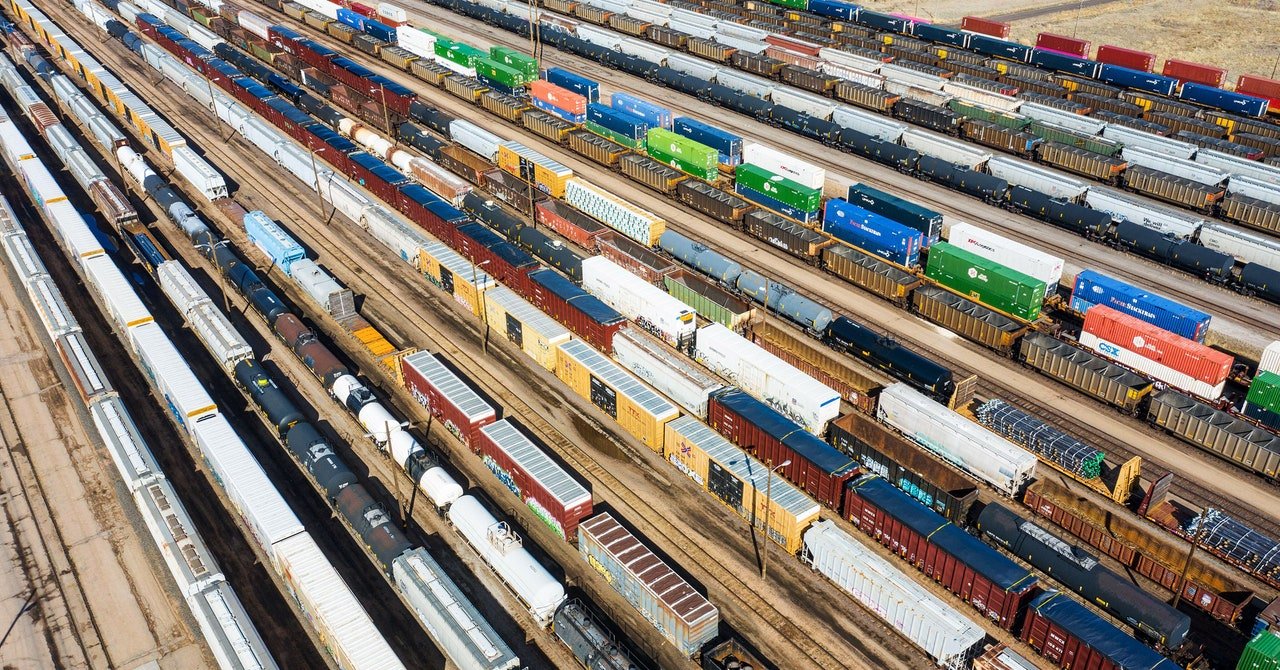Unions have also disputed how railroads have used new congressionally-mandated automated emergency braking systems to justify plans to remove conductors from trains, which would leave the engineer the sole human in charge of up to 3 miles of rail cars moving at up to 70 miles an hour. While the new braking system automatically stops a train if it blows through a signal, rail unions argue that it is not a replacement for a second set of hands and eyes on a lengthy vehicle that sometimes carries hazardous material.
The unions often point to a 2013 rail disaster in Quebec in which a lone engineer failed to properly secure a train before stepping off, and it rolled down a hill, killing 47 people and destroying most of a downtown. Afterwards, Canada’s government passed a law mandating two-person crews; last month, the US Federal Railroad Administration proposed setting its own rule to do the same, which the railroads association opposes.
The unpredictable schedules demanded by railroad companies often lead to sleep deprivation and poor health, making solo shifts dangerous, says Jordan Boone, a conductor for BNSF and a legislative representative for the transportation division of the International Association of Sheet Metal, Air, Rail and Transportation Workers (SMART-TD). “It’s not a sustainable lifestyle, to be on those trains by yourself,” he says. What’s more, “if something happens, it could take hours for somebody to get to you because we run in very remote locations.”
Greener Option
Trade associations, including those for the grain and chemicals industries, say one underlying cause of the rail crisis is a lack of competition. The number of major freight railroads has shrunk over the years, and in some areas, customers are captive to a single line. In Congress, the House Transportation and Infrastructure Committee is considering a bill that would create incentives for better service. The railroads association opposes the bill. The STB is also considering rule changes that would increase competition.
Greg Regan, of the transportation unions coalition TTD, says railroads deserve better for more than just business reasons, because they are more environmentally friendly and cost-efficient than alternatives like trucks. “The railroads should be a growing sector,” he says. “That is not happening right now, in part because the only focus from the corporate side is on quarterly shareholder returns, not long-term growth and what is ultimately better for our country.”
Sloan of the American Chemistry Council says rail freight problems could also hinder attempts to boost US semiconductor production. The CHIPS Act, a funding package passed last month, is expected to drive new business to chemical companies that produce chip components. “If you’re looking to make more things in America, like semiconductors,” Sloan says, “you need to be able to move them.” The recently signed US climate bill ties tax credits on electric vehicles to a requirement to process battery materials domestically, a reshaping of supply chains that could also depend on trains.
Unions and railroad companies now have two weeks left to consider the Presidential Emergency Board’s recommendations and reach agreement before a possible strike. The board essentially split each side’s proposal down the middle, suggesting a series of raises equivalent to 24 percent over five years, and asking employees to pay more for health insurance. The railroads association indicated its willingness to accept the recommendations, but labor groups have expressed disappointment, with some saying that the board’s recommendations didn’t go far enough, in part because they did not address intense work schedules.
After two years of supply chain woes, businesses and consumers may be about to get a new demonstration of what happens when a transportation network usually taken for granted grinds to a halt. Transportation consultant Larry Gross says that the pandemic delays and ongoing rail freight crisis are a reminder that an increasingly disaster-prone world demands hardier transportation networks. “These sorts of mega-disruptions are happening a lot more often than they used to,” he says. “The system needs to change to become a little bit more resilient and a little bit more flexible than it used to be.”

Leave a Reply
You must be logged in to post a comment.